The main architectural heritage of Cape Verde consists of the Cidade Velha, the town of Ribeira Grande de Santiago and the first Portuguese town built in Africa. Recently classified by UNESCO as a world heritage site, the Cidade Velha contains several monuments of great historical significance, but very few of them are still intact. The Church of our Mrs. del Rosario, built at the foot of the slope West of Ribeira, in Manueline style, is, like the Pelouirinho (1520), right in the Centre of the country, near the beach, the best-preserved 15th century (1495). The Church of Mercy, the hospital of the same name, home of the room and the chain, do not remain, although it is known that the parish of our Mrs. of the Conception was built from 1562, and let’s assume the first church at this time. Of the sixteenth century, there remain the convent of S. Francesco, in stabilized ruins, North of the Church of our Mrs. of the Rosary, on the site where the ships were equipped with.
The Architecture of Cape Verde
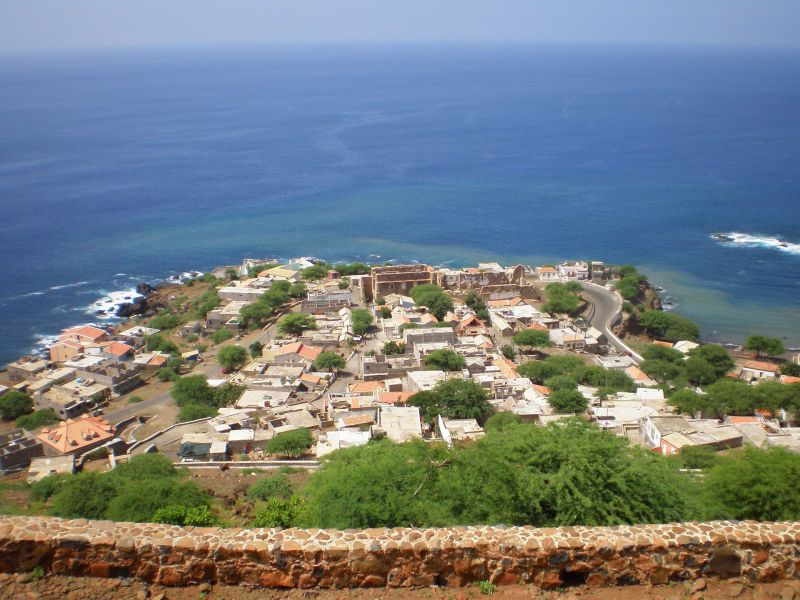
S. Bràs platform, where the Jesuits came to settle in the early 17th century, is also not remained anything. On the opposite side, the neighbourhood of Bairro de São Sebastião view the ruins of the Cathedral, in the works of restoration, whose construction lasted for over a century, between 1555 and 1693, and not remain more remains of the Episcopal Palace, on the side, with its library and archives (the Tombo Velho, who was burned “without which remain only one breviary for mass” as Bishop Francisco de Santo Agostinho wrote in 1712), nor of the praesidium. In fact, has become the city in 1533, Ribeira Grande will pay dearly of its smashing success, suffering horrendous raiding and looting by English pirates, French and Dutch, at a time when the same source countries supported them in their work of destruction and bears.
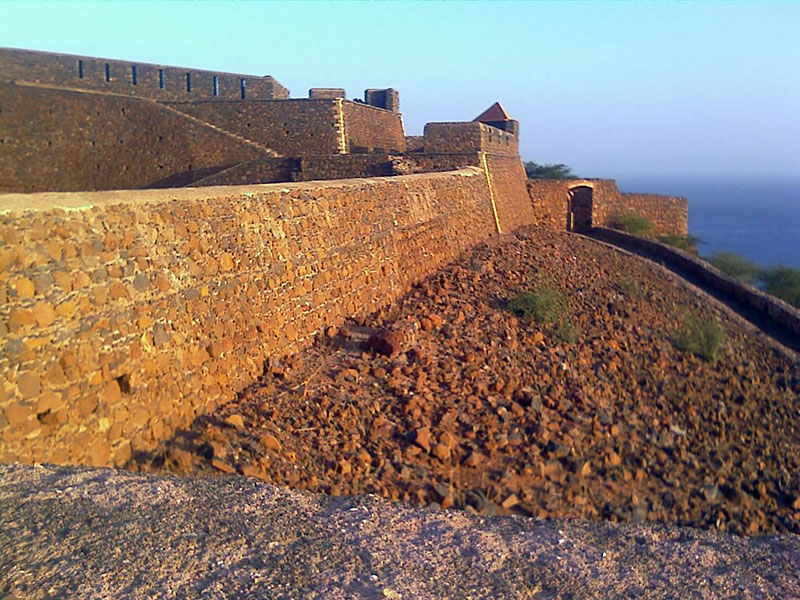
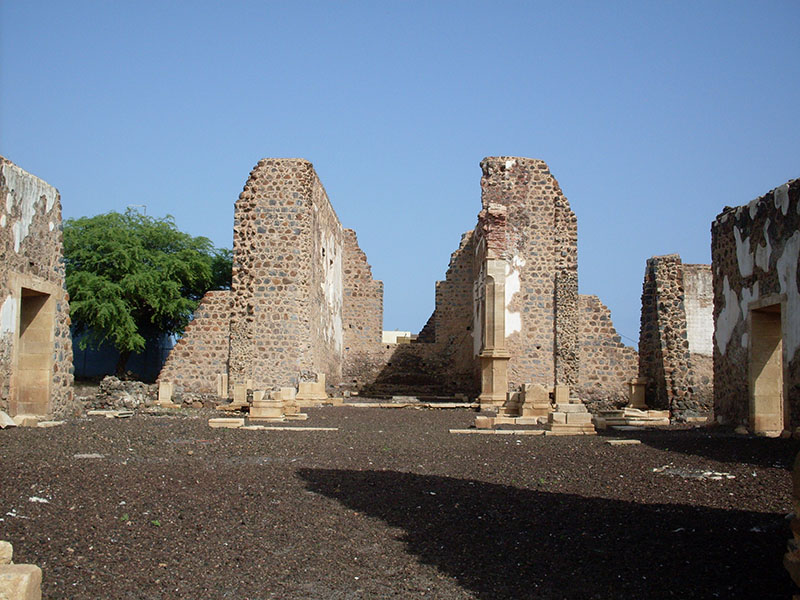
In an attempt to stop the accelerated decadence of the city, after a devastating attack of the famous Francis Drake (1585), was built from 1593 Real fortress of S. Filipe, in Esplanade overlooking the venue. The destiny of the city was marked. Regularly destroyed, depopulated, Ribeira Grande wouldn’t have resisted other pirate attacks, which culminated in what the French Jacques Cassard perpetrated in 1712, in fire after preyed upon everything, a treasure valued at times of 3 million pounds.
At the end of 1769, the capital is Praia de Santa Maria and Ribeira Grande declined to the status of a village in ruins. Praia, which became a city in 1858, is the heir of R. Grande, but not of its monumentality, traumatized by the destruction suffered by his ancestor. Here grows on platô (the first small plateaus where today the city doubles) the Praça Afonso de Albuquerque, where are institutional buildings of the capital: the Government Palace (Presidency of the Republic), the Municipal House, the Cathedral, the barracks. Today all platô is considered an architectural complex to be preserved, in which they concentrate all the institutions: the Palace of Justice, ministries, Imprensa Nacional, the high school Adriano Moreira (Domingos Ramos), hospital, market, Church of the Nazarene, the cinema, the middle school, the Bank of Cape Verde, the ethnographic museum, and other noble buildings, many of which are currently occupied by banks, commercial activities and small hotels. The monuments to the discoverer Diogo Gomez, in front of the Presidential Palace, and Amìlcar Cabral, father of Cape Verde independence, are two emblematic monuments of the social and political history of Cape Verde.

In Fogo multi-storey buildings have historic value and long balconies predominating at high floor. S. Filipe is a centuries-old testimony in which Municipal C., the Church and the square’s stage. Remain in S. Nicolau, the building which housed the high school seminar (1866-1931) to Ribeira Brava, the Church and the bust of Dr Jùlio Jose Dias. Dominate the port of Preguiça, Prince’s Fort, the Padrão das Descobertas and capp. of our Mrs. of the Mariners. To the old Calejão Orfanato das Irmãs do Amor de Deus in ruins, waiting to be restored to house the Museum of sacred art.

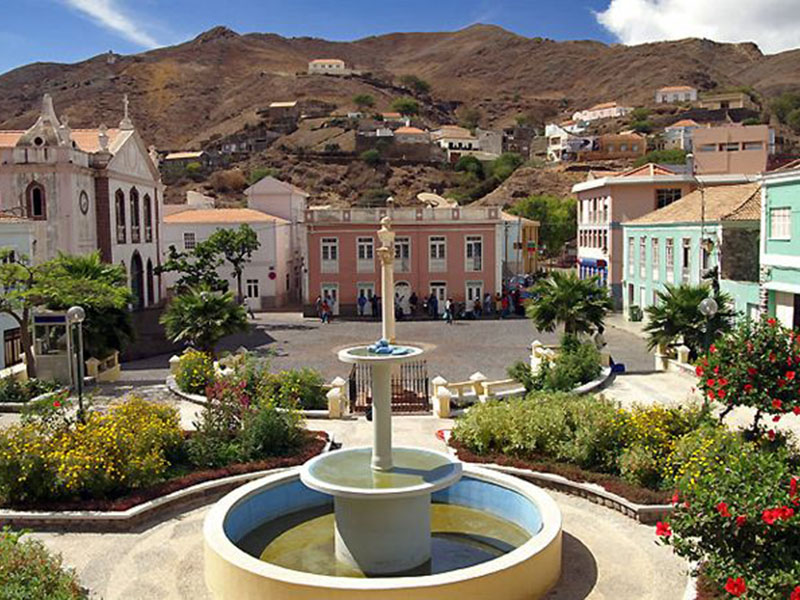
In Santo Antão, Ribeira Grande (heir to the name of first Cape Verde’s capital) and Ponta do Sol, Porto Novo that retain the charm of the colonial architecture of the time in which they were built. The central street of the first one, close to the mountains, is bordered by ancient buildings and relatively high, with the House Marçal, a nice and welcoming architectural complex. While at Ponta do Sol Municipal Chamber, hospital and Church, as well as the spacious square, frame a harmonious whole where the voice of Morna sings that “there cannot be a nicer place!”. In Santo António das Pombas has erected a statue of the Saint on the top of the hill, in reference not only for locals but for anyone visiting the Ribeira do Paùl. Halfway from Povoação, above the sea, the synagogue, a sign of a strong presence of Jews on the island, now in ruins, is home to the development of a tourist drive.
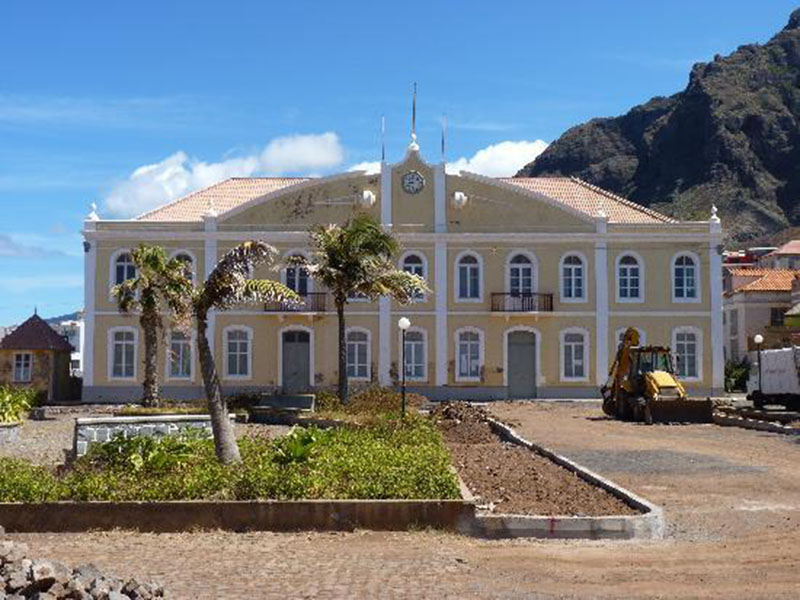
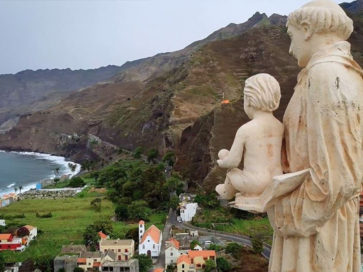
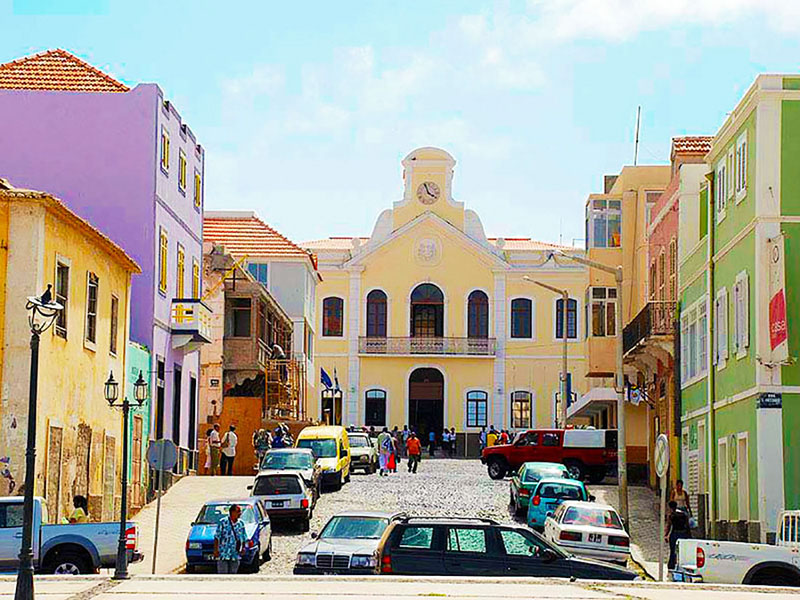
Although it has been populated and urbanized belatedly, S. Vicente boasts an impressive building in the city of Mindelo, where the King’s Blockhouse, 1852, the Highschool Gil Eanes, the second quarter of the twentieth century (which was for some time the post office); the Municipal House, colonial-style; the Capitania (replica of the Tower of Belém in Lisbon); the municipal market; Banco Nacional Ultramarine (which gave rise to BCA), Government Palace (Palace of the Presidency), the parish church, the hotel Porto Grande, as well as the Quiosque (kiosk) and the Coreto (stage) of the Praça Nova and some public statue. The island of Brava is a model of architectural harmony, with its whitewashed houses and ashes, the beautiful walls lined in stone, with particular importance for the sober elegance of Nova Sintra, dominated by the statue of Eugènio Tavares (poet). The House of his residence, in the upper part of the town, is now the house-museum Eugènio Tavares. The city of Maio, also known as Porto Inglês, is dominated by the Castle, built in the same era of S. Filipe, Ribeira Grande, in turn under the supervision of the parish Church: an icon of the island above the central square.
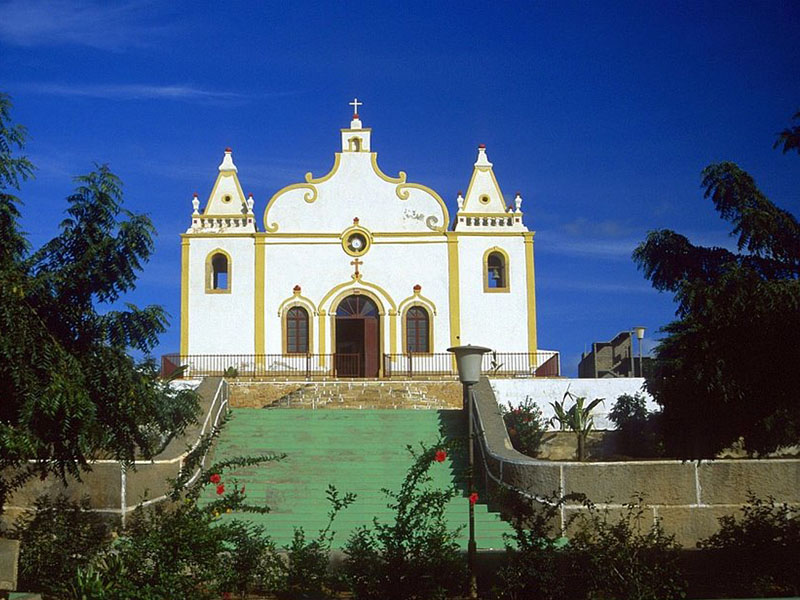
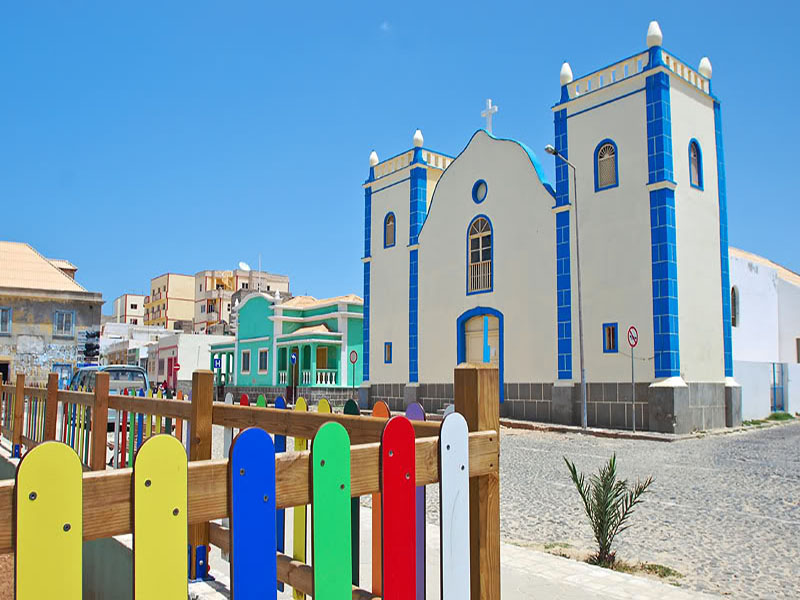
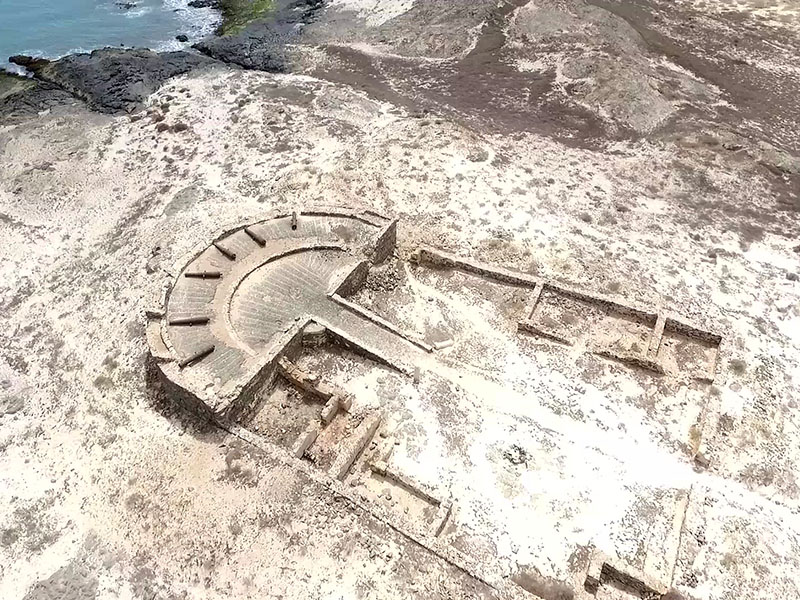
In Boavista, Sal Rei has a remarkable architectural complex, dating back to when the salt was an important trade and was to settle the merchants and politicians, in stately homes from two or three floors. It is this time the House of Benoliel de Carvalho, in the square, now in ruins, he did as well build a dwelling and a chapel to the North, in Praia of our Mrs. of Fàtima, which remain some walls. It is 1818 the Fort Duque de Bragança, on the small island facing to prevent attacks such as those that in 1815 and 1817 were launched against Sal Rei from British and South Americans.
